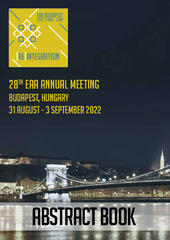Приказ основних података о документу
The Southernmost Exceptional Archaeological Discovery from the Hungarian Conquest Period: the Significance of Several Finds from Bačka Region (Serbia)
| dc.creator | Radišić, Milica | |
| dc.creator | Uzelac, Viktorija | |
| dc.date.accessioned | 2023-11-21T18:02:15Z | |
| dc.date.available | 2023-11-21T18:02:15Z | |
| dc.date.issued | 2022 | |
| dc.identifier.isbn | 978-80-88441-02-1 | |
| dc.identifier.uri | http://rai.ai.ac.rs/handle/123456789/716 | |
| dc.description.abstract | This paper will present several interesting archaeological finds from the period of the Hungarian Conquest, originating from Stanišić in Bačka – a part of a gilded belt set, a golden hoop and a golden finger-ring set with carnelian gem. These objects were discovered on a necropolis located on a mound, which was damaged in intense ploughing activities during the 1980s. After having been sold to the City Museum in Sombor the findings were kept in a safe, without being presented to a wider scientific public. According to their traits they correspond to the material culture of the Hungarian warrior elite from the first half of the 10th century, and they have close analogies in necropoles from the Upper Tisza valley (e.g. Karos). On the other hand, certain similarities can also be noted with sites from the wider area of Eastern Europe. In this paper, we will analyse the origin, symbolism and artistic and crafting milieu of the items from Stanišić, with a special attention given to the interpretation of the gem with representation of a lion carved into it. According to preliminary analyses, the gem is most similar to Sasanian glyptic specimens, which imposes interesting questions regarding its use. In this sense, a wider social-historical context and routes of long-distance trade in early Middle Ages will also be taken into consideration. All the data available suggests the possibility that the findings from Stanišić belonged to a prominent member (members) of the military elite. As the southernmost findings with clear emblematic meaning, they bear witness of the invasion routes of the Hungarian army outside of their primary settling zone in the north of the Carpathian Basin, on which there is little archaeological data for the time being. | sr |
| dc.language.iso | en | sr |
| dc.publisher | Prague : European Association of Archaeologists | sr |
| dc.rights | openAccess | sr |
| dc.source | (Re)integration abstract book : 28th EAA Annual Meeting : Budapest, Hungary, 31 August - 3 September 2022 | sr |
| dc.subject | Early Middle Ages | sr |
| dc.subject | 10th century | sr |
| dc.subject | Hungarian Conquest Period | sr |
| dc.subject | Carpathian Basin | sr |
| dc.subject | Bačka | sr |
| dc.subject | gilded belt set | sr |
| dc.subject | golden finger-ring | sr |
| dc.subject | carnelian gem | sr |
| dc.subject | Sasanian glyptic | sr |
| dc.title | The Southernmost Exceptional Archaeological Discovery from the Hungarian Conquest Period: the Significance of Several Finds from Bačka Region (Serbia) | sr |
| dc.type | conferenceObject | sr |
| dc.rights.license | ARR | sr |
| dc.citation.epage | 520 | |
| dc.citation.spage | 519 | |
| dc.identifier.fulltext | http://rai.ai.ac.rs/bitstream/id/1626/bitstream_1626.pdf | |
| dc.identifier.rcub | https://hdl.handle.net/21.15107/rcub_rai_716 | |
| dc.type.version | publishedVersion | sr |


